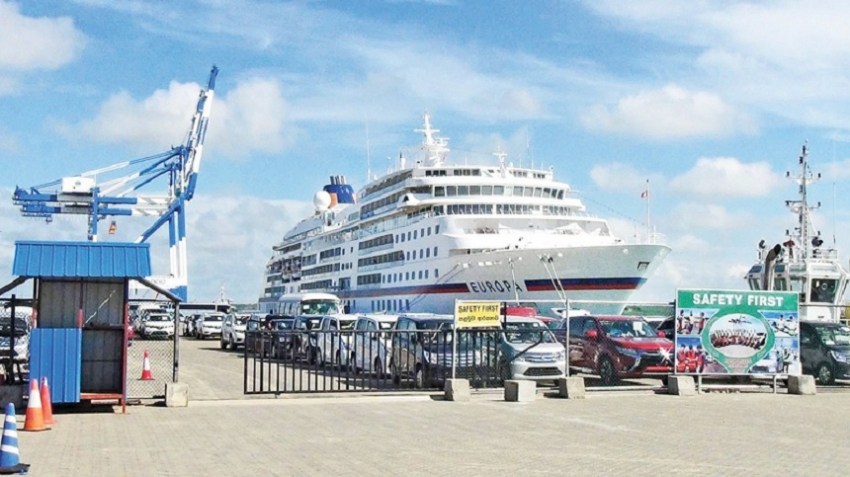The Ceylon Fishery Harbours Corporation (CFHC) was established in 1972. Many fishery harbours can boast of a colourful and vibrant history. One such is the Galle Fishery Harbour.
Sri Lanka has 12 fishery harbours which are currently operating successfully. Most are fully equipped with slipways, water, electricity, fuel, auction halls, cold rooms, ice plants and all necessary facilities required for commercial purposes. Some fishery harbours are currently being reconstructed by various donors. To enhance the efficient operation of all fishery harbours, a central monitoring facility is also in place.
Mirissa, Kudawella, Kirinda, Kalpitiya, and Panadura fishery harbours are currently being identified as yacht marinas as these fishery harbours have extensive waterway accessibilities to the ocean, a climate ideal for sailing, and ideal water temperature.
The Mirissa Fishery Harbour is reputed for dolphin and whale watching, snorkelling and deep-sea diving. Deep-sea fishing is carried out while accompanied by an experienced diver. Mirissa attracts more visitors in November and April; even during the off-season, there is a big crowd. The Department of Coast Conservation and Coastal Resources Management has demolished unauthorised constructions, which were an eyesore that kept local and foreign tourists away from the beach. Mirissa beach is the most attractive and is superior to the other beaches in the island, according to tour operators.
The Kirinda Fishery Harbour is used as a transit harbour for fishing craft. It is a scenic harbour and plans are underway to set up necessary facilities to make it an attractive destination for yachts.
The Tangalle Fishery Harbour has received a substantial amount of assistance from the government of Japan under a Japan International Cooperation Agency (JICA) project and has excellent refrigeration facilities to store and supply ice for freezing and to store frozen fish.
The Puranawella Fishery Harbour has many facilities such as the supply and storage of ice, net mending, supply of fuel, and an auction hall. The United States Agency for International Development (USAID) upgraded this fishery harbour. Blessed with its own natural harbour, it is a hub that attracts tourists. The harbour also attracts a large number of boats which berth there.
By its very name, Hambantota asserts its position as a port with a long history. It was the place where Chinese ships cast anchor and moored in the days of the Silk Route.
According to the chronicles, Hambantota fell into disuse as a port after Ruhuna ceased to be an important centre for trade and commerce in the country. Even the British used it as a seaport, as is evident from the parts of the jetty, the Customs house, lighthouse and other constructions associated with the port that still exist.
In the search for better port facilities to meet Sri Lanka’s present-day needs and for the foreseeable future, all studies point to Hambantota as the ideal location for construction and development of a new seaport and its adjacent facilities. It was considered that Hambantota Port has all the requirements which can make it the hub of the Asian sea route.
In a region where poverty, unemployment and problem of the educated unemployed youth was most felt, mainly due to economic disadvantages in Ruhunu Rata, it was considered that the development of Hambantota as a major seaport would bring quick and ready relief to the problem of unemployment.
It was also considered that Hambantota could offer all important services such as transshipment and break bulk. All available information indicated that the best location for a seaport in the Southern coast would be Hambantota. Experts said that Hambantota Port is the only location in Sri Lanka which is along the main sea route with a depth of 20 metres, the ideal depth required for a modern seaport. It is the only location in the Indian Ocean which can anchor 100 ships per day.
Hambantota Port offers the following by way of port development facilities, according to Naval engineers.
It does not require a detour for the ships that pass Sri Lanka each day. It has a 20-metre depth of one kilometre, and as such, there could be no congestion within or without the seaport, and the entire port could be developed as a well-planned fully fledged seaport city.
The port can well cater to future generation ships which will be larger and need deep anchorage and berthing facilities.
The seaport can easily cater to at least 36,000 ships per year and it has immense scope for industrial development; other services would be bunkering and oil refining.
The extensive studies carried out by experts in the area of port development and seaport facilities that could contribute to national development, showed that the South of Sri Lanka offers one of the best possible locations to attract the maximum number of ships, which is Hambantota Port.




















